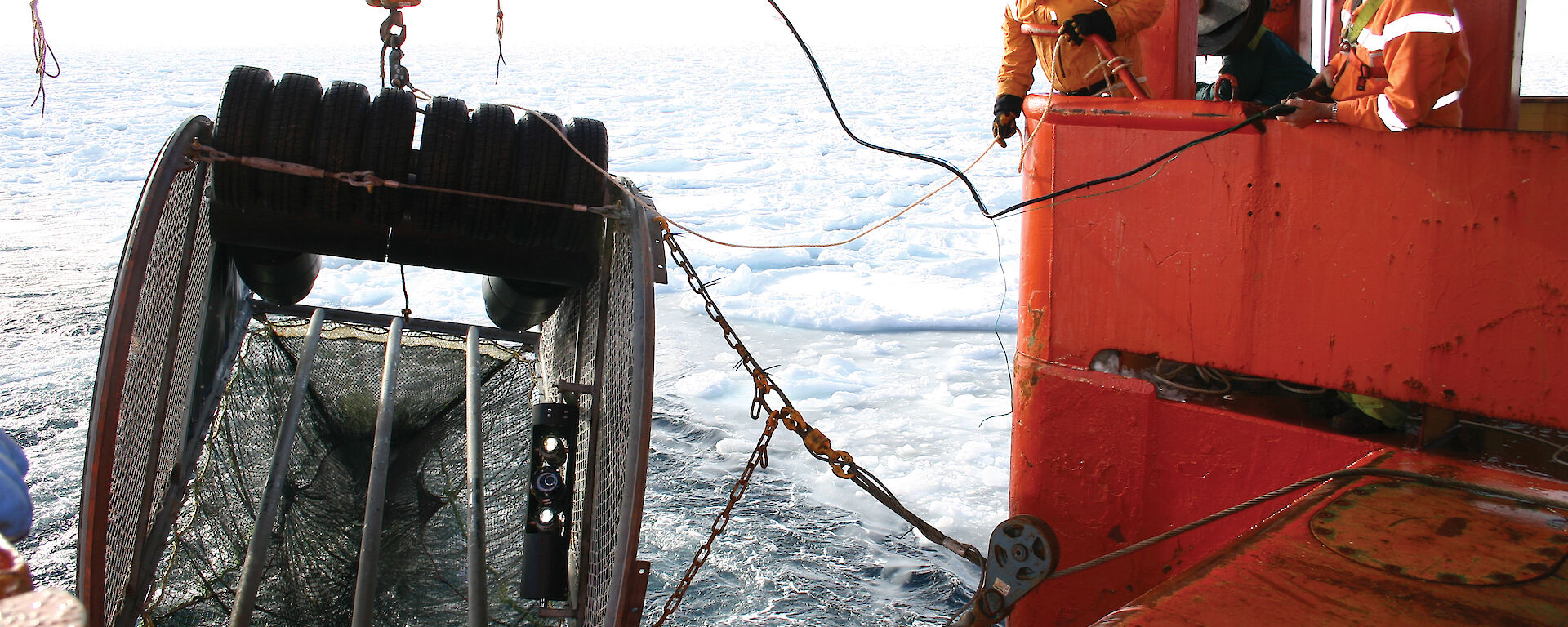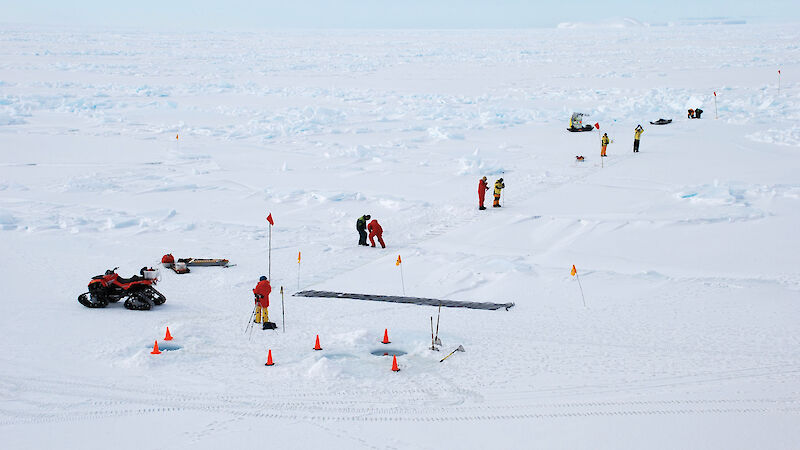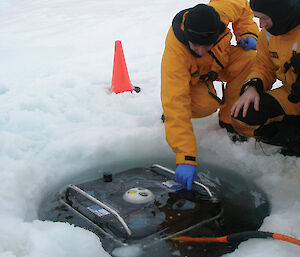The Sea Ice Physics and Ecosystems eXperiment (SIPEX), involving 45 scientists from 12 countries, has improved scientists’ understanding of the relationship between sea ice physical processes and the biological environment within and under the ice. The program, led by the Australian Antarctic Division and the Antarctic Climate and Ecosystems Cooperative Research Centre, was conducted on a 55-day multi-disciplinary sea ice voyage, at a time of maximum sea ice extent in East Antarctica. During this time scientists took a series of measurements at 15 ‘ice stations’, to characterise the sea ice environment.
SIPEX was conducted as part of a larger IPY project titled ‘Antarctic Sea Ice in the IPY’ which drew together research programs across many countries. The US-led Sea Ice Mass Balance in the Antarctic (SIMBA) program, for example, aimed to characterise the sea ice environment of West Antarctica. It investigated sea ice thickness, extent and physical and biogeochemical properties, the interaction between the ocean, atmosphere and ice, and the biology of the sea ice, among other things. Together, SIPEX and SIMBA formed a major, simultaneous study of much of the Antarctic sea ice zone.
During SIPEX, field measurements of snow properties as well as sled-based radar measurements provided valuable insights into ‘radar returns’ (returning signals) from the snow surface, ice/snow interface and intermediate layers within the snow pack. This allowed scientists to identify the snow layers that most affect the reflection of a radar signal and to estimate snow thickness. Coupled with airborne radar and laser altimetry measurements, this information will play a pivotal role in the interpretation of satellite altimetry data and the development of global ice and snow thickness products.
To understand linked physical-biological sea ice processes, detailed measurements were made of ice properties, including ice structure, inorganic nutrient concentrations, trace elements (such as iron), and biological parameters such as ice algal biomass and species composition. In addition, Antarctic krill was sampled using trawls and camera systems lowered under the ice.
The combined data show a strong increase in biological production (such as algal growth and krill growth and reproduction) during the latter half of the research voyage, indicating that the voyage captured the onset of biological activity during the winter-spring transition.
A number of new technologies were used, adapted and deployed as part of the program, including the Surface and Under Ice Trawl, used to sample krill immediately under the ice; airborne laser and radar altimetry for measuring sea ice ‘freeboard’ (height of ice above the water) and snow cover over tens to hundreds of kilometres; and instrumentation on a Remotely Operated Vehicle for exploring the presence of algae and krill immediately under the ice. These technologies will be further developed for future research campaigns and have established the Australian Antarctic program as a key centre for conducting high quality, innovative field work in the Antarctic sea ice zone.
SIPEX involved scientists from many different countries, a number of which now have improved research links and capabilities with Australia. This is particularly true of the Japanese program with which Australia is now engaging in closer ties on climate change research, and with European collaborators on calibration and validation efforts on the new CryoSat-2 altimetry satellite, which will be launched in November 2009. The voyage also resulted in a new collaboration with researchers from the Netherlands (IMARES. Wageningen University Research) and strengthened existing collaboration with German and Norwegian colleagues.
A great deal of airborne data was collected during SIPEX, including aerial photographs over sea ice, which will be archived with images from other field campaigns at the Australian Antarctic Data Centre (AADC). The laser and radar altimetry, once fully processed, will provide a reference to regional sea ice and snow thickness in the study region. Biological data from the voyage have also been submitted to the AADC.
Twelve PhD students participated in SIPEX, working with other scientists and students in related disciplines. The Teachers Experiencing Antarctica program enabled two teachers to participate in the SIPEX program, and provided a direct link between scientific research in Antarctica and classrooms in Australia and around the world. A website, which was updated daily from the ship, enabled students and the general public to follow the progress of the voyage and to learn about Antarctic research first hand.
A workshop will be held in Italy in March 2009, at which the results of the SIPEX and SIMBA programs and all other Antarctic sea ice research during IPY, will be presented. A special volume of Deep Sea Research II on ‘Antarctic Sea Ice in IPY’ will be published and more than 30 preliminary paper titles have been submitted for consideration. Many of the programs conducted during SIPEX will continue over the next few years, and will contribute to the development of new field programs in the future.




